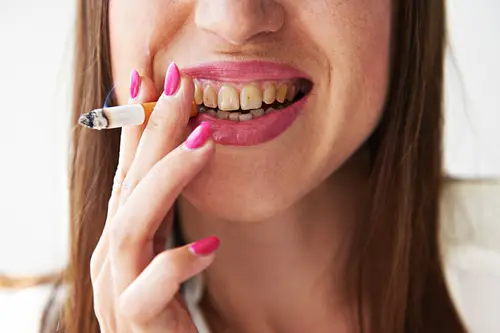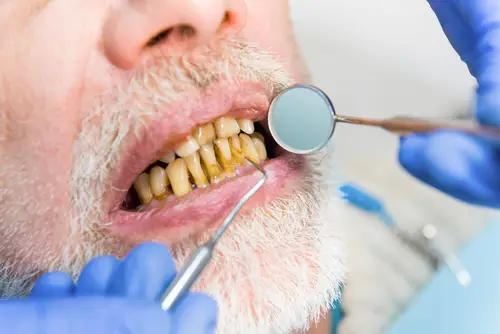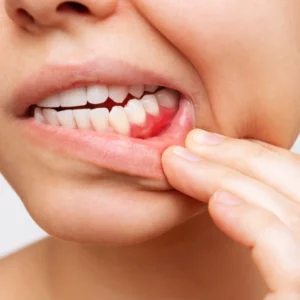Most people are aware of the fact that smoking is injurious to health. It can lead to certain health issues as well as fatal medical conditions. However, not all people realize the impact of smoking on their gums, teeth, and mouth. Smoking can cause gum disease, tooth staining, tooth loss, and, even worse, mouth cancer.
Here we have listed some key impacts of smoking on your teeth and gums as well as some tips to prevent the dangers.
Oral Cancer:
Smoking increases the cases of oral cancer diagnosed annually, according to a report by the Oral Cancer Foundation.
The University of California found that 8 out of 10 patients used to smoke. When you inhale, the lethal chemicals in tobacco smoke first go through the mouth and throat before getting in the lungs. The repetitive exposure can lead to changes in the oral cavity, which can lead to oral cancer. Luckily, this is a preventable disease.
Periodontal (Gum) Disease:
Periodontal disease is the infection of gums and bone related to the teeth. It is caused by harmful oral bacteria and can cause tooth loss. And this risk is more in smokers compared to people who don’t smoke.
Smoking impacts your immune system, making it challenging for your body to deal with conditions like gum infections. Periodontal treatment might not be that effective for smoker compared to a non-smoker, because smoking hinders the healing of the gums.
Stained Teeth:
Tobacco smoke contains tar and nicotine which lead to stained and yellow teeth. Did you know that your teeth have pores just like the skin? The nicotine and tar easily get into these pores, thereby causing yellow or brown discoloration. Although nicotine is colorless, when mixed with oxygen, it gets the yellow shade. Even electronic cigarettes with nicotine can stain the teeth.
Bad Breath:
The evident effect of smoking is bad breath. The smell of cigarette smoke remains in your breath for a long. Smoking also leads to mouth dryness, one of the key reasons for halitosis of bad breath. Smoking also causes gum disease that is another source of bad breath.
How to Reverse the Effects of Smoking on Your Oral Health
Quit Smoking:
Stopping smoking minimizes the risk of gum disease and oral cancer, and helps the success rate of gum treatment. Even if you have been a staunch smoker for many years, quitting can benefit your oral health.
Therefore, it is never too late to stop smoking, even if you have smoked for years. You will still experience immediate and long-term advantages.
However, quitting smoking is easier said than done as nicotine in tobacco is an addictive substance. In this scenario, dental health professionals can play a vital role in smoking cessation and improve the odds of successfully quitting. Besides, you should have a motivation for quitting.
Visit Your Dentist:
You must visit your dentist for a normal checkup and mouth examination so that any other conditions can be determined early.
Use Specific Toothpaste:
There is specific toothpaste for smokers. They might be a little more abrasive than regular toothpaste and you should use them carefully. Your dental team might recommend you to use these toothpastes as an alternative to your regular toothpaste. There are several whitening toothpastes to choose from. Although they don’t alter the natural teeth color, they can remove stains, thereby improving the entire appearance of your teeth.
Use Mouthwash:
Smokers often have bad breath. Therefore, they can use breath products such as mouthwashes as a quick and short term solution for their problem.
General Oral Health Tips for Smokers:
Make sure to do flossing, brushing, and use a tongue cleaner and mouthwash regularly, at least twice a day. Use a toothbrush that is meant for your dental problems or you can take advice from your dentists for the same. Prefer the one that comes with stiff and strong bristles to remove the hard stains left by tobacco tar. The toothbrush should reach the difficult areas in the back of the gums.
Avoid Foods That Cause Staining:
Some foods can also lead to staining and erosion. Avoid food such as coffee and soda as they can stain the teeth. The acidic foods should be avoided as they can lead to enamel breakdown and cavities.
Look for the Symptoms:
Make sure to watch for long-lasting sores around the mouth, neck, and face. If they persist for a couple of weeks, it can be signaling towards a health problem. Smokers should also look for recurrent bleeding in the mouth, swelling, lumps, and lesions. White, dark, or red patches on the inside of the mouth, on the cheeks, and under the tongue that lasts more than a couple of weeks call for immediate medical attention. Lumps on the lips and gums can also be a sign of a health problem.
So you must have understood how smoking can undermine your oral health. While quitting smoking is the most effective way to prevent further damage and speed up healing, make sure to visit your dentist and follow the suggested dental hygiene routine.
What do you think? Let us know by commenting below!













